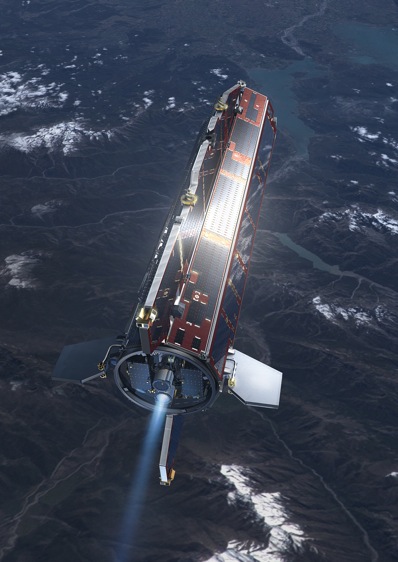|

Top Stories

|

|
 |
 |


Geriatric pulsar still kicking
...NASA's Chandra X-ray Observatory has spotted the oldest, most isolated pulsar ever detected in X-rays...
read more

Coloured quasars suggest 'smoky' Universe
...Hold your breath: we may be living in a smoky Universe that dims light from distant objects such as quasars...
read more

Saturn's newfound moon could be source of G ring
...Discovered within Saturn's outer G ring is a faint moonlet, thought to be responsible for maintaining the ring and its single ring arc...
read more |
 |
 |

|
Spaceflight Now +

|

|
 |
 |

Subscribe to Spaceflight Now Plus for access to our extensive video collections!
 How do I sign up? How do I sign up?
 Video archive Video archive

STS-120 day 2 highlights

Flight Day 2 of Discovery's mission focused on heat shield inspections. This movie shows the day's highlights.

 Play Play

STS-120 day 1 highlights

The highlights from shuttle Discovery's launch day are packaged into this movie.

 Play Play

STS-118: Highlights

The STS-118 crew, including Barbara Morgan, narrates its mission highlights film and answers questions in this post-flight presentation.

 Full presentation Full presentation
 Mission film Mission film

STS-120: Rollout to pad

Space shuttle Discovery rolls out of the Vehicle Assembly Building and travels to launch pad 39A for its STS-120 mission.

 Play Play

Dawn leaves Earth

NASA's Dawn space probe launches aboard a Delta 2-Heavy rocket from Cape Canaveral to explore two worlds in the asteroid belt.

 Full coverage Full coverage

Dawn: Launch preview

These briefings preview the launch and science objectives of NASA's Dawn asteroid orbiter.

 Launch | Science Launch | Science

 Become a subscriber Become a subscriber
 More video More video

|
 |
 |

|
|
 |

Mapping the Earth’s gravity as never before
BY DR EMILY BALDWIN
ASTRONOMY NOW
Posted: 10 March, 2009
The most sophisticated Earth observation satellite will launch next week to map our planet’s gravitational field with unprecedented resolution and accuracy.
Gravity data is essential for monitoring ocean circulation and sea-level change, as well as processes linked to volcanic and earthquake activity. GOCE - the Gravity field and steady-state Ocean Circulation Explorer - is the first of a series of Earth Explorer satellites to enable cutting edge research regarding the Earth’s atmosphere, biosphere, hydrosphere, cryosphere and interior.

GOCE is a unique five-metre long satellite that will map the Earth's gravity in greater detail than ever. Image: ESA-AOES Medialab.
The one-tonne satellite carries a highly sensitive gradiometer that will allow scientists to plot tiny variations in the Earth’s gravity field in three dimensions. This will result in the most detailed high-resolution map of the geoid, the reference (so-called “ground-zero”) level of the planet, as well as highlighting gravitational anomalies. Mapping a planet in this way provides insight into its internal structure, as well as vital reference data for ocean circulation and climate studies. The mission will also have practical applications in construction, planning and surveying.
The science requirements of the mission mean that the spacecraft has to orbit the Earth at close enough quarters to gather high-accuracy gravitational data while being able to filter out disturbances caused by the remaining traces of the atmosphere in low Earth orbit, at an altitude of just 260 kilometres. The result is the five metre long aerodynamic satellite equipped with low power ion thrusters to compensate for atmospheric drag. Unlike other satellites, it has none of the usual moving parts that could interfere with the gravity measurements. GOCE, with its sensor, system of supporting instrumentation and control elements, actually forms a single composite gravity-measuring device.
GOCE is scheduled to launch on 16 March from the Plesetsk Cosmodrome in Northern Russia. Later in the year, two other Earth Explorer missions will launch to study soil moisture and ocean salinity, and ice sheet thickness, respectively. Additional Earth Explorer missions are also being designed to address other aspects of the Earth environment, from the evolution of the magnetic field to the Earth’s radiative balance.
A live televised transmission of the launch of GOCE will be streamed online at http://www.esa.int/goce. |
 |
 |
 |
|
|



